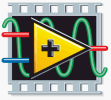Seeing The Bits In The Bytes
In a world of complex systems, it may be easy to forget some of the basic concepts that build these systems. Software applications can consist of hundreds of individual files as part of one very large project. Those files all work together to achieve amazing functionality within an embedded system. There are instances where a project may include files written by teams located in different countries. We like to think that when this software is put into production all the bugs have been discovered and the software will work perfectly. Unfortunately, there always seems to be unintended use or a sequence of events that result in undesired functionality. Other times, there is just a plain old bug that managed to find its way into production software.


